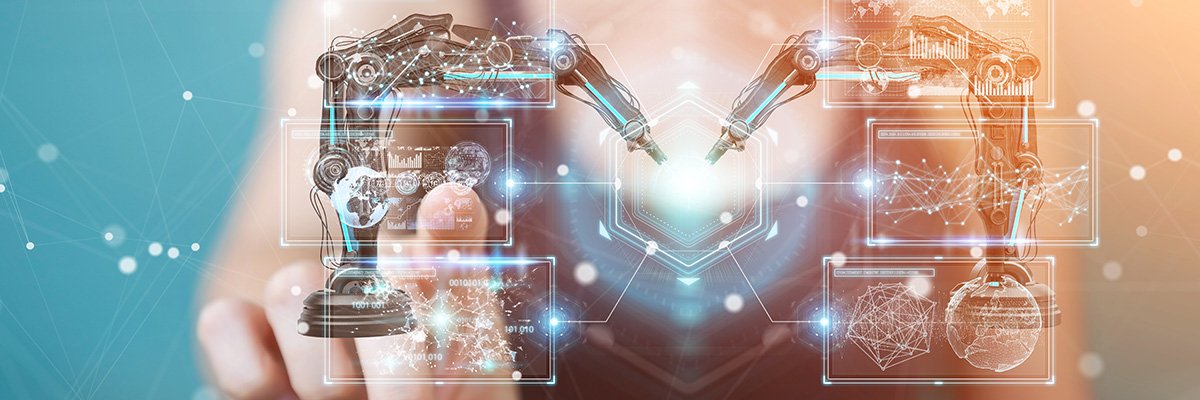Even though relatively new, digital twins are virtualising industrial settings, urban environments and strategic decision-making scenarios, but they can also virtualise biological systems and dynamics – even as far as understanding disease and treatment.
At Boston Children’s Hospital, surgeons employ digital twins of hearts and other organs to analyse medical issues and plan surgeries. Not only can the physicians take a look at, say, the heart itself, but they can also understand the impact of the surgery on the flow of blood and oxygen or the pressure on valves.
The three-dimensional representation of the organ allows doctors to rotate the visualisation to gain a precise understanding of the layout for the upcoming operation. In the future, sensors attached to the patient could create real-time virtualisation of heart conditions in the digital twin.
Ellen Kuhl, professor of engineering at Stanford University, elaborates on the advantages. “When you have this model, you can personalise with certain features, certain anatomy,” she says. “Then you can try things. In heart surgery, you can’t try 20 different things. You only have one shot.”
Meanwhile, Singaporean researchers have developed a digital twin that replicates metabolic fluxes to predict chronic kidney disease in type 2 diabetes mellitus.
The researchers point out that in the past four decades, the number of diabetes patients has doubled. In fact, the city-state of Singapore features one of the highest percentages of patients with kidney failure due to diabetes globally. The digital twin analysis enables the researchers to investigate long-term changes in metabolic processes, letting physicians predict the occurrence of chronic kidney disease in the next three years.
Other initiatives take a fundamental research approach by trying to understand how pathogens can behave. The US Defense Advanced Research Projects Agency has inaugurated the Simulating Microbial Systems (SMS) programme, which is looking at predicting the behaviour of bacteria via computational simulations. In particular: “SMS seeks interdisciplinary, comprehensive and integrated workflows to generate unknown parameters from new data to inform computational models that can predict E. coli.”
Boosting physiological performance
Digital twins of the human physiology can not only serve to develop a better understanding of diseases, but could also find use to improve performance in sports.
Researchers at Ecole Polytechnique and Institut Universitaire de France have developed a digital twin for athletes in running sports which takes physiological characteristics into account. The simulations “were validated by comparison with field performance, experimental observations and literature data”, they say. “Simulations of record times and three-minute all-out tests were consistent with experimental data.”
Such investigations already impact sports competitions. Olympic swimmers at the Paris 2024 Olympics had support from their own digital twins. Since 2015, researchers from Emory University and the University of Virginia have collected data from swimmers via inertial measurement units at ankles, the back and wrists to capture acceleration, force and orientation of the athletes’ bodies.
Advanced sensors measure the force the swimmers’ hands create and the direction the force is facing. They use these streams of numbers to create an athlete’s digital twin, which captures their movements down to the millisecond. They have now assembled a massive database of digital twins from more than 100 of the best US swimmers, enabling coaches to recommend actions to improve the athletes’ technique.
Creating virtual patients and patient populations
More ambitious projects have targeted the creation of digital twins of the entire human body. The European Commission has created a framework to promote the development of digital twins of humans. The European Virtual Human Twins Initiative is attempting to create representations of human health and states of disease. The initiative’s goal is to advance personalised treatments and care.
Medical digital twins (MDTs) have the potential to substantially change how physicians and hospitals will research diseases, identify conditions, select medications, and prepare treatments and operations. They use computational models that can be personalised to an individual patient and can be dynamically recalibrated to reflect changes over time. Such twins find use in investigating and understanding tuberculosis, such as what drives different infection outcomes, informing development and approaches for treatment and prevention.
Another area is the study of respiratory viral pathogens. Numerous viral and host factors in addition to complications from other pathogens and underlying diseases can result in heterogeneity in the severity of infection, but their contribution or those from other, hidden mechanisms is unknown. Pneumonia patients in intensive care units is another concern, and researchers are trying to build a pneumonia digital twin for ICU patients that serves as a decision support tool for the doctor.
A role in pharmaceutical development
The pharmaceutical industry is marked by high development costs, a high degree of uncertainty if a drug will reach markets, animal models that often don’t represent human responses, and a patient population’s heterogeneity that can create variability. Digital twins can jumpstart the selection of promising drug development candidates.
Pharmaceutical company Orion Corporation is employing Aitia’s digital twin to use its clinical data and identify potential candidates to target cancer diseases. Aitia has developed Gemini Digital Twins as computational representations of disease that capture genetic and molecular interactions that causally drive clinical and physiological outcomes.
Already in 2023, Altis Labs was spearheading a coalition to create a digital twin for clinical trials. The medical imaging company is working with pharmaceutical companies AstraZeneca and Bayer, among others, to accelerate the development of cancer treatments and reduce the failure rate.
Meanwhile, pharmaceutical and healthcare company Sanofi is working on and with virtual patient populations. The digital twins of patients take into consideration disease biology, pharmacology and pathophysiology knowledge to generate a digital framework.
The company says that while real patients are still essential in late-stage studies, virtual patients allow it to test its novel drug candidates before moving them into the clinic and at different early phases during development, accelerating evaluation of drug candidates’ safety and efficacy.
The company notes that pharmaceutical R&D faces a 90% failure rate of new drug candidates during clinical development. In addition, recruiting of patients can be challenging and time-intensive. Another benefit is the generation of vast amounts of data that can be studied.
Sanofi has employed virtual asthma patients to investigate the efficacy of a novel compound. The virtual patients represented all relevant cell types and proteins that associate with asthma. The marketplace for related medication is competitive and many alternatives exist. Sanofi therefore wanted to focus only on the most promising and market-relevant solutions.
Speeding up the identification of compounds that are not suitable for market introduction can reduce costs, and allows researchers to focus quickly on candidates that show initial promising results. The use of digital twins to identify, evaluate and assess compounds, materials and proteins, for instance, enables a fail-fast approach.
Digital twins are also likely to have a growing impact on medical research and patient treatment. Better understanding of body functions and disease workings enables researchers to create computer simulations that represent real-world issues accurately.
Artificial intelligence is capable of analysing an increasingly large amount of data collected with ever-more powerful sensor technologies. Also, personalised medicine is spreading and individualised approaches to medication and treatment are slowly pushing aside one-size-fits-all procedures.
Improving farming
Finally, digital twins can replicate entire ecological systems to help understand and improve agriculture and aquaculture. Steven Kim at California State University, Monterey Bay, and Seong Heo at Kongju National University studied the possibility of creating agricultural digital twins for mandarins. They say data visualisation and analysis demonstrate the potential use of agricultural digital twins in the future, pointing to future uses.
“This concept extends the current management practices based on data-driven decisions, and it offers a glimpse into the future of individualised agriculture by enabling customised treatment for plants, akin to personalised medicine for humans,” they add.
Researchers at Iowa State University, University of Nebraska-Lincoln (UNL) and Purdue University will collaborate to develop a virtual twin of a cornfield to investigate agricultural performance under varying circumstances. Combined, the academic institutions received US National Science Foundation grants of some $3m.
James Schnable, associate professor of agronomy and horticulture at UNL, explains the purpose of the research project. “Once we build these digital twins, we can use high-performance computing to simulate and explore how whole fields of corn with different properties would behave – how resilient they are to wind and how efficiently they use water and capture light, for example – without having to actually grow the corn field,” he says.
Digital twins also find use to develop an understanding of how to restore sustainable ecological environments. The Digi4Eco scheme – digital twin-sustained 4D ecological monitoring of restoration in fishery-depleted areas – is investigating approaches to address the challenges of climate change and regulate human activities that affect ecological environments.
As part of the project, networks of robotic platforms “collect data to build digital twins for expanding our understanding of the 4D changes of marine ecosystems”. The efforts intend to create a virtual representation of the ocean and its bio-ecological dynamics. The project will enable researchers to look at historical and current data to understand changes to the ocean environment in the short and long term.
Martin Schwirn is the author of “Small data, big disruptions: How to spot signals of change and manage uncertainty” (ISBN: 9781632651921). He is also senior advisor for strategic foresight at Business Finland, helping startups and incumbents to find their position in tomorrow’s marketplace.







